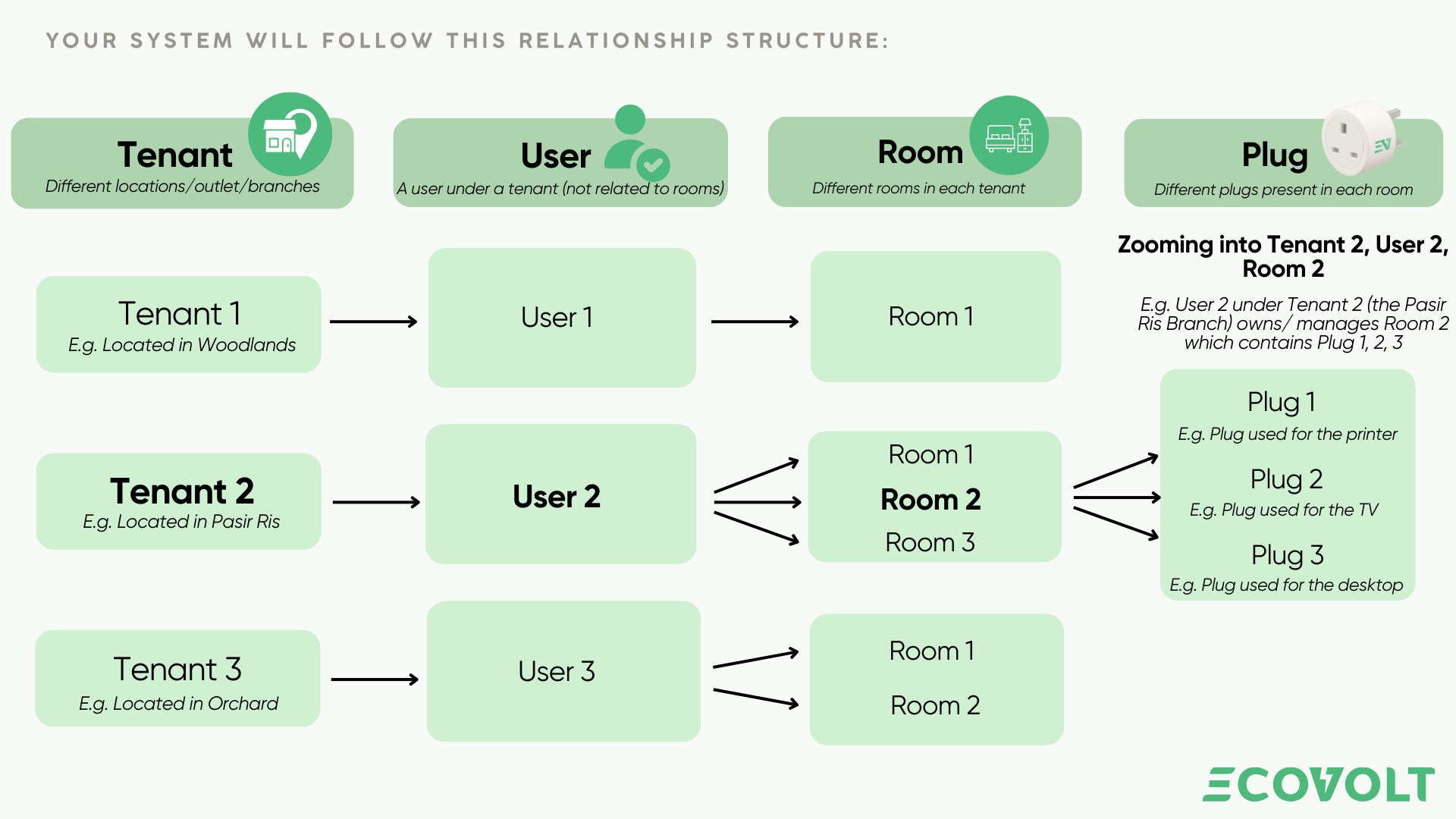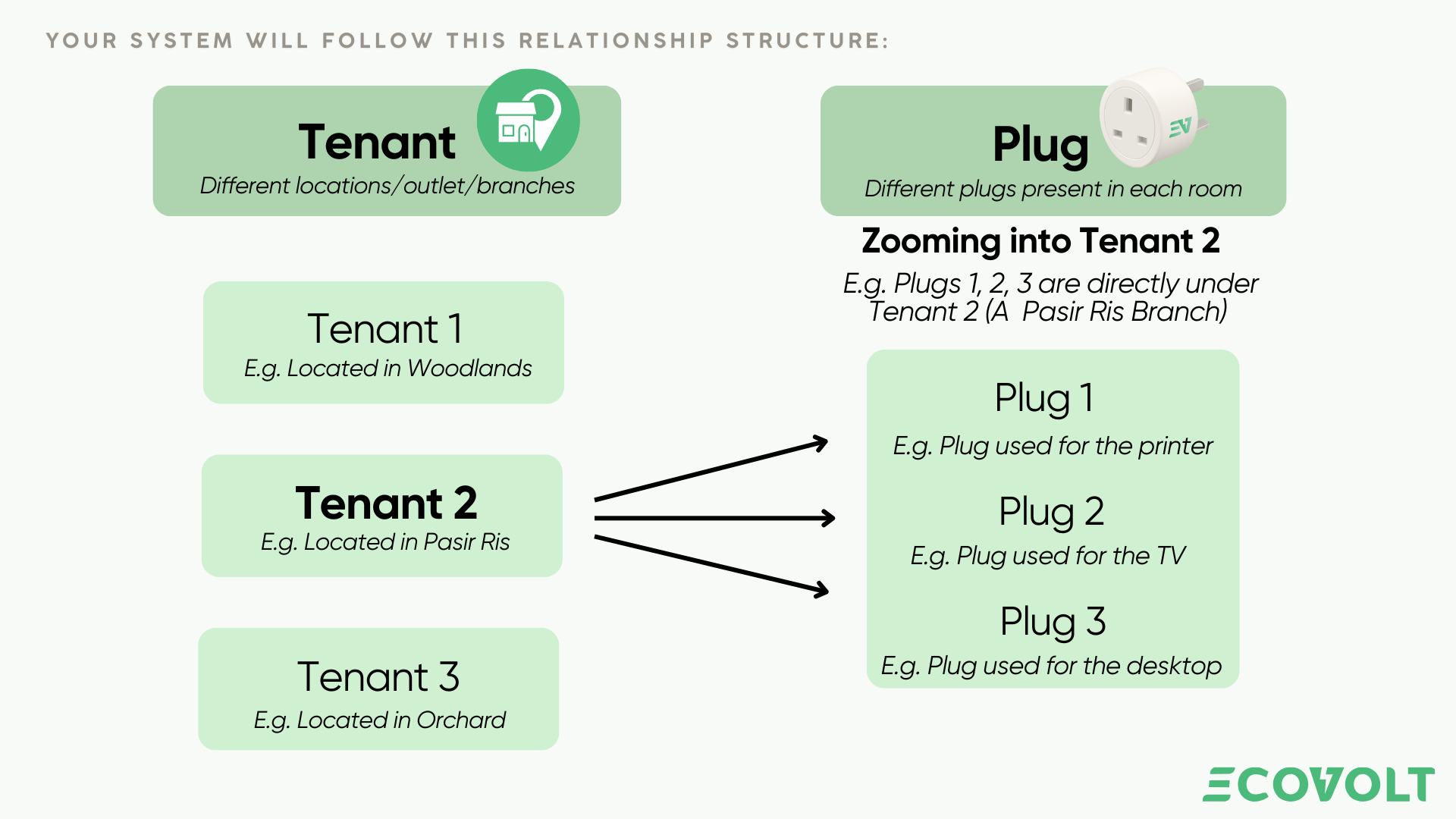System Hierarchy & Relationship
Understanding the relationship between tenants, users, rooms, and plugs
1. Tenant → Room → Plug
 A tenant can be understood as the different branches across Singapore under one company.
A tenant can be understood as the different branches across Singapore under one company.
For example, a tuition centre with branches in Woodlands, Pasir Ris, and Orchard has 3 tenants. Each tenant consists of several rooms. The tenant located in Pasir Ris, for instance, contains Classroom 1, Classroom 2, and Classroom 3.
Within each room, various appliances require Ecovolt’s plugs. In Classroom 2, for example, there are three appliances — a printer, a TV, and a desktop — each requiring one plug.
2. Tenant → Users → Plug
 Each user under a tenant directly owns or manages specific plugs (not tied to rooms)
Each user under a tenant directly owns or manages specific plugs (not tied to rooms)
Example of Use Case:
- Individual-based setups like remote or hybrid work, where each employee (User) are assigned devices (E.g. home monitors, laptops, chargers)
- Useful for usage accountability per person instead of per space
3. Tenant → Users → Rooms → Plug
 Each user manages multiple rooms, and plugs belong to those rooms.
Each user manages multiple rooms, and plugs belong to those rooms.
Example Use Case:
- Large properties or shared accommodations (E.g. Hostels, serviced apartments) where one manager/user oversees several rooms
- Useful when there’s a sub-manager level (E.g. Dorm warden monitoring rooms under their block)
4. Tenant → Plug
 All plugs are directly under the tenant, with no users or rooms.
All plugs are directly under the tenant, with no users or rooms.
Example Use Case:
- Simple like retail stores, vending machines, or small outlets — where room or user segmentation is not needed
- Ideal when there is centralised control and minimal hierarchy